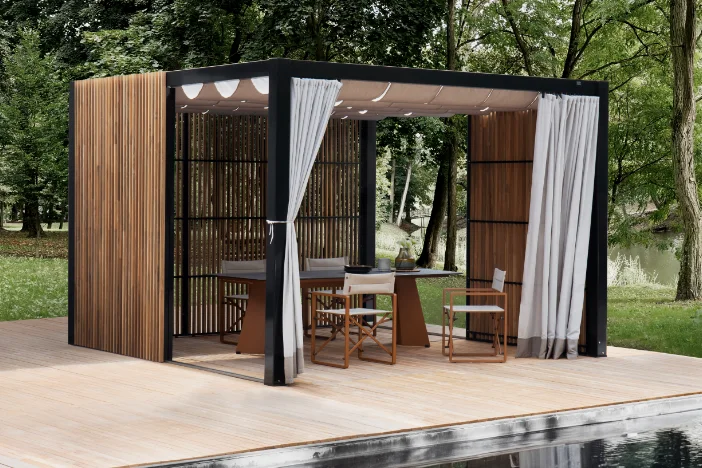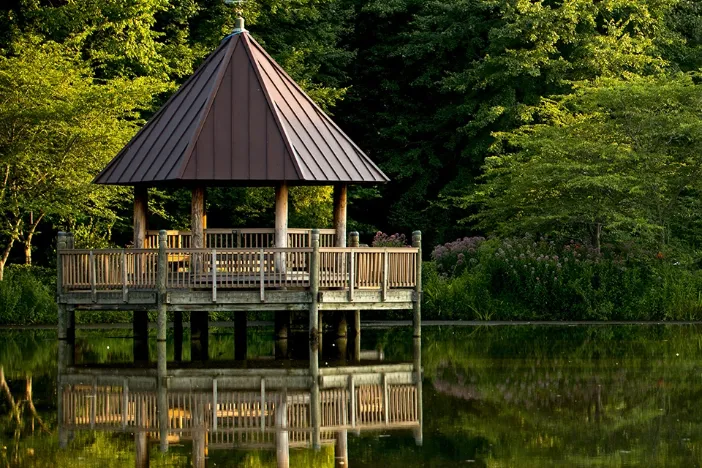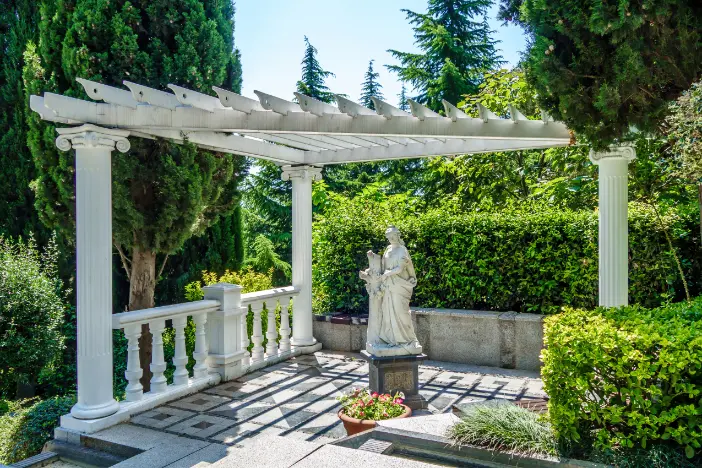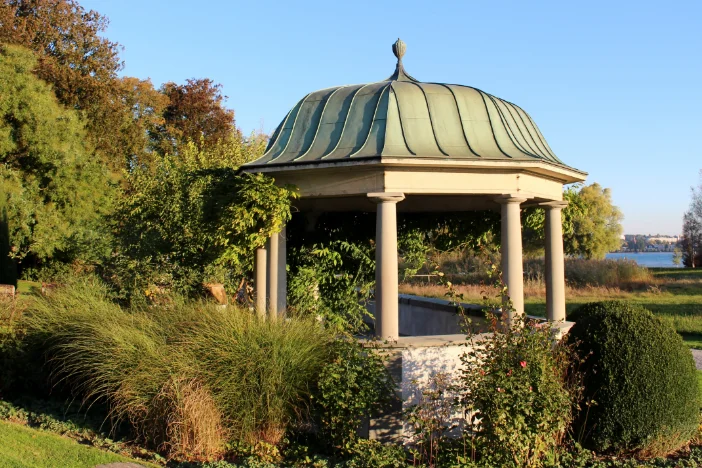Exposure to the sun can burn your skin and give you sunstroke, even if you slather on sunscreen. This makes outdoor shade necessary, as you’ll have a safe haven to go to. In this guide, we’ll have an in-depth discussion about your choices for outdoor shade structures.
Guide - Shade Structures
Gazebos – Private Shade Structures for Shelter & Aesthetics
Gazebos are freestanding garden structures with sturdy roofs made with standard materials, like shingles. The roofs connect to the flooring through posts. You’ll find railings along the perimeter of the gazebo, which makes it an enclosed space while still open on all sides.
Pergolas – Timeless Standalone or Attached Lattice Shades
Pergolas are made of several vertical posts or pillars with no walls. On top of these are cross beams to create a flat roof, and on some, you’ll have an open lattice or screens. This means that normally, it isn’t 100% shaded underneath unless you pull a canvas or tarp over the top.
Cabanas – Beach-Side Structures for Privacy & Shade
While cabanas bear a significantly similar resemblance to gazebos, one of the key differences is that there are three walls and only one open side. This open side faces the water, so people have easy access to the inside. This means you’ll usually find cabanas at the beach or by a pool.
Pavilions – Spacious Outdoor Covers for Large Gatherings
A pavilion has a completely closed roof, and all four sides are completely open. It’s supported by four to six posts, although some pavilion styles have more (or less). The main difference between a pavilion and a gazebo is that there’s no built-in floor here. Also, pavilions tend to be larger.
Canopies – Modern Customizable Pool Shades with Casual Elegance
The term “canopy” is often used interchangeably with “tent.” Technically, the difference is that the sides of canopies are open with a completely closed roof, while tents usually have sides made from the same material. However, lightweight curtains and modular panels on some models make the differences between canopies and other shade structures less clear.










